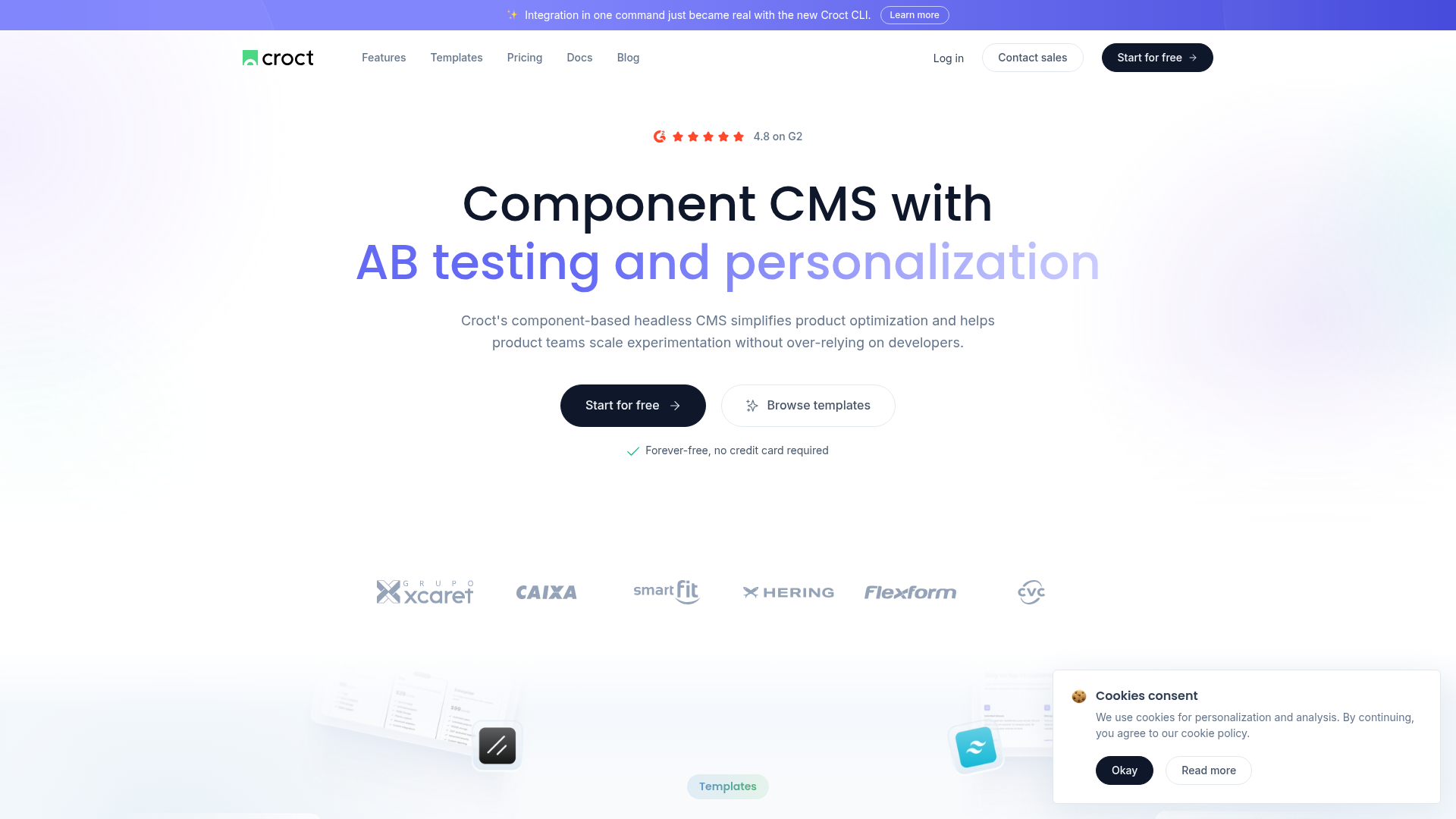Croct
| Introduction: | Croct is a component-based headless CMS designed to scale product optimization through built-in A/B testing and personalization. |
| Recorded in: | 6/4/2025 |
| Links: |

What is Croct?
Croct is a component-based headless CMS designed to scale product optimization for businesses. It provides built-in A/B testing and personalization capabilities, enabling product managers, CRO specialists, marketing teams, and developers to run and analyze experiments independently without extensive development cycles. The platform allows integration with existing design systems to easily optimize user experiences, reducing reliance on developers for content changes and personalization. Croct aims to streamline repetitive tasks, allowing teams to focus on impactful features while ensuring high performance and consistency in user experiences.
How to use Croct
Users can start with Croct's forever-free plan by signing up without a credit card. The platform integrates easily using the Croct CLI and various SDKs compatible with different tech stacks. The workflow involves three main steps: 'Model' to define content attributes and create hybrid components, 'Implement' by integrating SDKs and choosing rendering strategies, and 'Manage' to run experiments, personalize content, and analyze results. It supports both developers for deep integration and non-developers for no-code iterations and content management.
Croct's core features
Component-Based Headless CMS
Built-in A/B Testing
Advanced Personalization Capabilities
No-Code Iterations for Marketers
Developer-Friendly SDKs and CLI
Typed Attributes and Hybrid Components
Auto-Versioning for Seamless Updates
Ultra-Low Latency APIs
Flexible Rendering Strategies (Client/Server-side)
Detailed Analytics and User Journey Insights
Use cases of Croct
Scaling product optimization and experimentation processes
Implementing A/B tests and personalizations without developer dependency
Integrating and optimizing existing design systems
Creating dynamic, personalized user experiences based on behavior
Increasing conversion rates and online sales through targeted content
Gaining detailed insights into user journeys for better experience design
Rapidly deploying content changes and personalizations (e.g., banners)
Segmenting audiences (e.g., new users, likely to churn) for tailored interactions
Optimizing e-commerce user paths based on past visits
Running robust tests on complex or legacy website systems